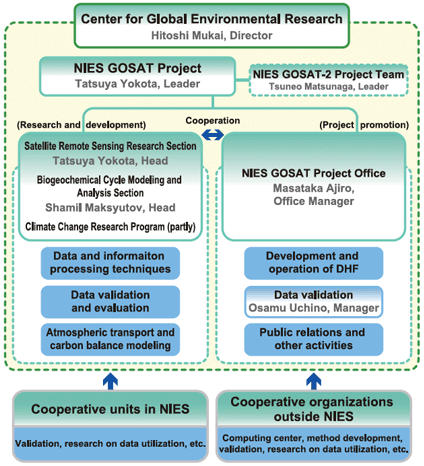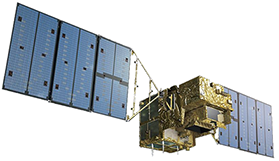[1] Goals of the GOSAT Project
[2] Instruments and Observational Methods
[3] Methods of Analyzing GOSAT Data
[4] Data Processing and Data Product Distribution
[5] GOSAT Data Products
[6] Validation of GOSAT Data Products
[7] Information and RA
[8] Organization and Plans
[8] Organization and Plans
GOSAT has been operating properly since the spacecraft was placed in orbit on January 23, 2009. The initial calibration and validation of the instruments onboard started three months later, and the routine observation has continued since July 28. The distribution of the Level 1 data to the general public was initiated on October 29 of the same year. This was followed by the release of the Level 2 and Level 3 data products in 2010.
A project unit in NIES carries out the GOSAT Project (Figure 24). This unit implements the primary tasks of the GOSAT Project, which include developing algorithms for calculating column abundances of CO2 and CH4 from the GOSAT observational data, validating and evaluating the results, and developing and improving numerical models for estimating the sources and sinks of CO2 and CH4. The unit also operates GOSAT DHF and provides information to data users (Chapter 4).
The CO2 and CH4 Level 4 data products have been released since December
2012 and July 2014, respectively. For updating the released data products, the Project will continue the tasks of renewing the data processing algorithm, processing and re-processing the observational data with the updated algorithms, and validating the acquired data products.

Figure 28. NIES GOSAT Project organization (as of July 2016)).
Privacy Policy | Link | Glossary
Copyright © National Institute for Environmental Studies. All Rights Reserved.















